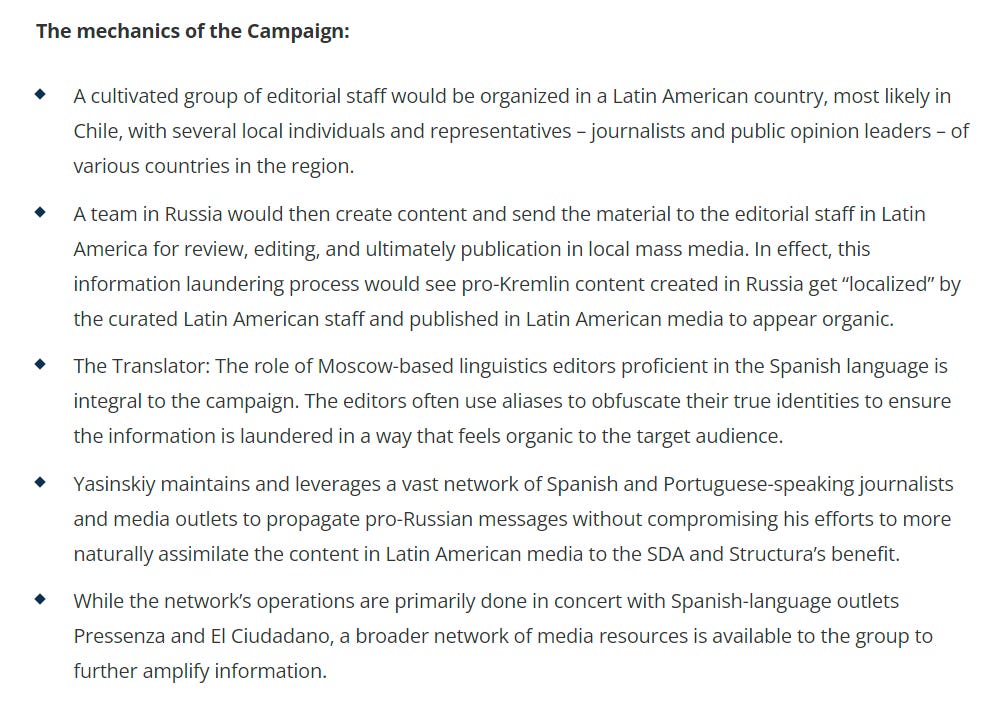Memetic Warfare Weekly: Tacticool Influencer Memetics
Welcome to Memetic Warfare Weekly.
My name is Ari Ben Am, and I’m the founder of Telemetry Data Labs - a Telegram search engine and analytics platform available at Telemetryapp.io - and Glowstick Intelligence Enablement.
Memetic Warfare Weekly is where I share my opinions on the influence/CTI industry, as well as share the occasional contrarian opinion or practical investigation tip.
It’s been a bit busy these past few weeks for obvious reasons, but I hope to get back to posting weekly in the near future.
In the meantime, let me share with you our latest Telemetryapp.io update, and then we’ll dive in.
Our latest update, as part of our open beta, is channel/group analytics. Take a look at this pro-Russian propaganda/disinformation channel as shown below, we can see:
Channel subscribers, message content, total views and engagement
Latest messages, messages by top views, most forwards and more soon to come!
Check out basic information on the channel - including language, creation date, last post/update date on our end and the about section.
Paginate through the group or channel content and see posts directly, without having to use the Telegram app itself.
The first thing that we’ll take a look at this week is a US State Department GEC (Global Engagement Center) statement on exposing Russian information and influence operations in Latin America.
This statement is interesting for a few reasons. Firstly, it covers the end-to-end content creation, localization and dissemination stages of any IO. The statement also dives into the much-discussed multilingual nuts and bolts of content creation, illuminating via presumably closed-sources how states can create content and promote campaigns globally, even in languages that aren’t spoken by a large swathe of the populace.
The “localization” efforts as described are very interesting, as well as maintaining a large arsenal of controlled journalists and outlets such as Pressenza, which they deny:
The utilization of front companies as well is something commonly-known at this point, but it’s great to see more naming and shaming done on that end as well to deter malign actors.
Continuing on the note of name and shame, France recently did the same to Russian activity (translated below)
This is a case worth mentioning for a few reasons.
Firstly, this is one of the first cases publicized (that I’ve seen) from Viginum, France’s new counter-foreign interference arm. Viginum identified Doppelganger-related activity on Twitter and Facebook which amplified the recent case of a Moldovan, known pro-Russia couple, arrested in France on suspicion of having spray-painted Jewish symbols throughout Paris in an intimidating fashion at the behest of Russia.
This is a fascinating case of cyber/physical IO overlap - not something we see every day, but something we do see increasingly emanating from Russia, like in Poland recently).
Tacticool Influencer Memetics
Not all counter-IO response is naming-and-shaming online activity. Rappler recently published a great look at Chinese information operations and propaganda targeting the Philippines, which included some context on how the Philippines is countering Chinese influence.
But first, some context.
The Philippines’ has been engaged in below-threshold (and sometimes at-threshold) warfare with China over key maritime positions due to the ongoing border dispute to the 9-dash line (google it).
You can see a very scientific representation of the Chinese claims below:
Chinese naval belligerency has made for strange bedfellows, with Japan and the Philippines even agreeing to increasingly tight military cooperation. Keep in mind - these are the same people who are not known for their warm and fuzzy relations with Japan following WW2:
Ties have gotten so bad over this that the Philippines has even cancelled its BRI projects with China.
Now, let’s take a look at a few of the key points mentioned in the article. One of the main points is that “experts” and “think tanks” are utilized to promote pro-China talking points, with the credentials providing them a veneer of authenticity. This is common not only with Chinese influence, but also Russian, Iranian and other threat actors.
As such - when looking into a certain region, I always recommend taking a look at the academic and think tank landscape.
The article also quoted an official from the Philippines’ National Security Council (which apparently is responsible for IO in the Philippines), which is somewhat uncommon in the IO space. IO is still viewed by many as an under-threshold action, and officials are often not interested in going on record about it so bluntly.
The article also further quoted the official about the Philippines’ counter-IO strategy:
“The Marcos government’s active decision to release photos and videos about incidents in the disputed waters contributed to the dwindling reach of pro-China narratives online, Malaya said, adding that the Duterte government’s policy before was to not share with the public the skirmishes for operational security.
“The decision to embed media in Coast Guard vessels was a big decision,” Malaya said. “At the end of the day, we thought it would be better for the national interest to allow the public to see what’s happening.””
This, in my humble opinion, is perhaps the most interesting element of this article. This is a rare case of a smaller nation, most definitely the weaker of the two (US mutual defense treaty aside), actively outfoxing their ostensibly much more capable opponent.
Choosing to embed and adopt an almost full-transparency approach was effective. Legacy, mainstream media makes sense now, but one can only imagine a future in which influencers are tactically deployed and embedded in stratcoms teams, situation rooms and even operational units.
Imagine, if you will, a Twitch streamer unironically streaming footage of a Chinese fishing boat ramming a Philippines Navy vessel and the chat absolutely blowing up.
On that mental image, I will leave you for this week.











Thanks for the LatAm coverage here!